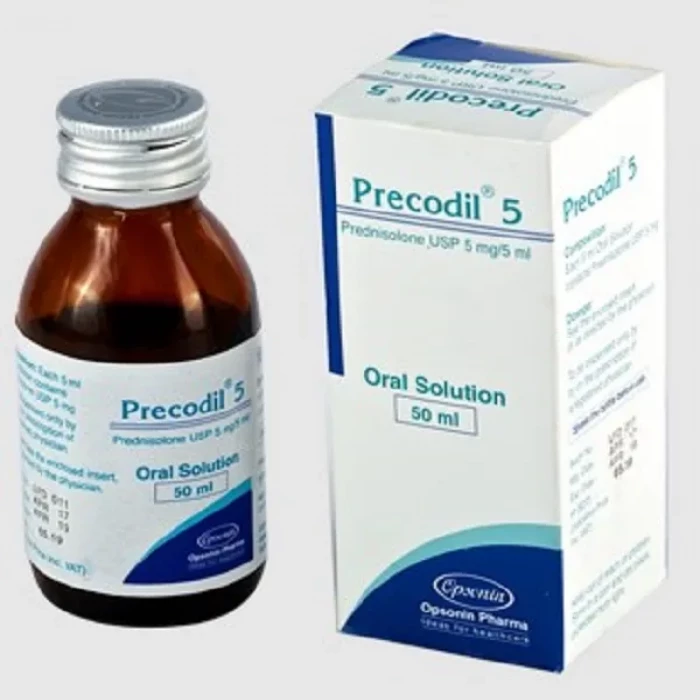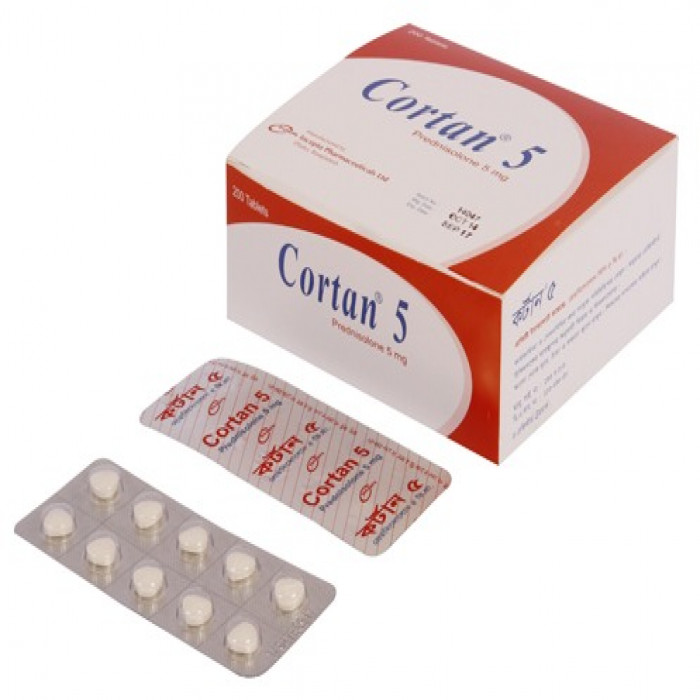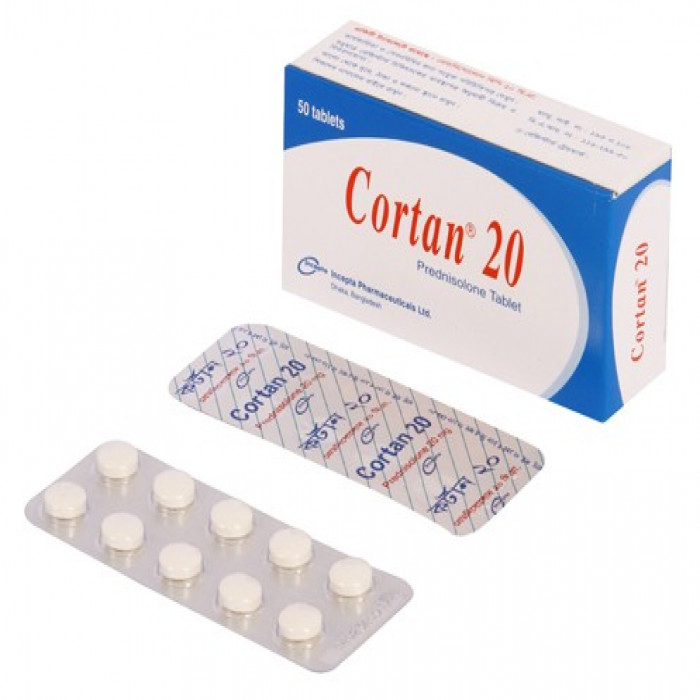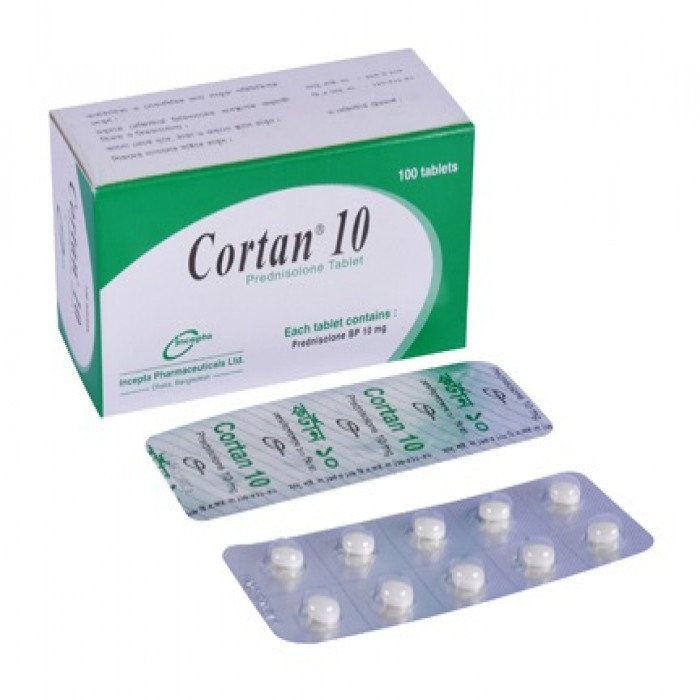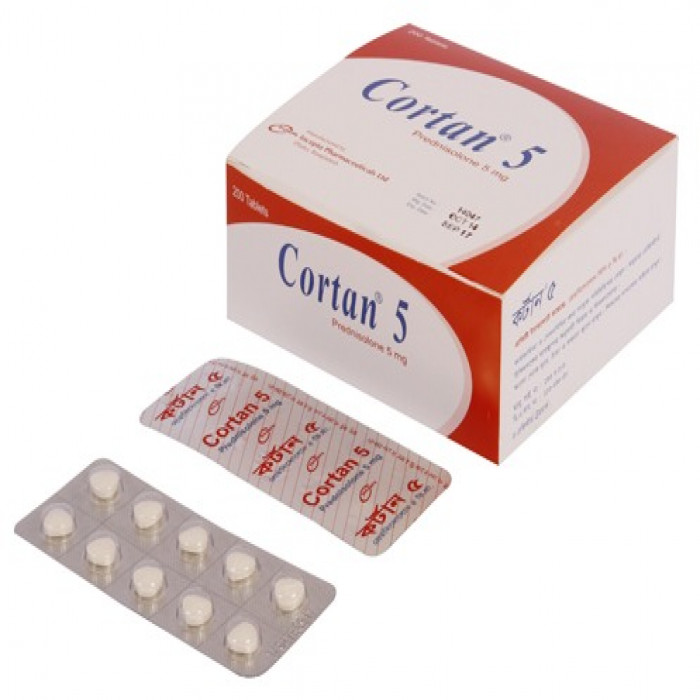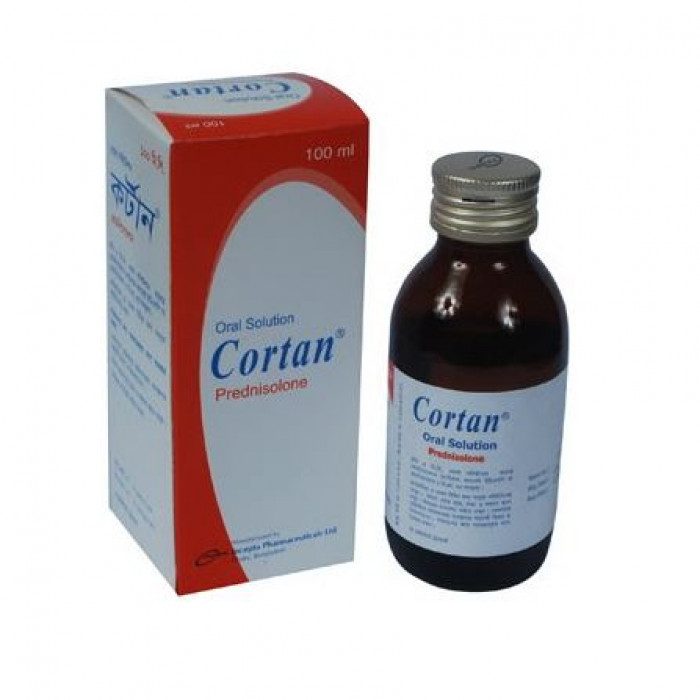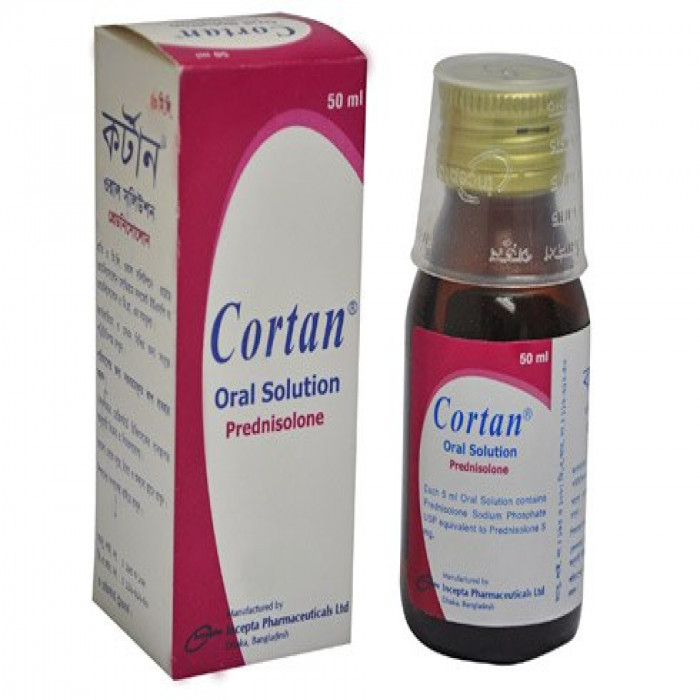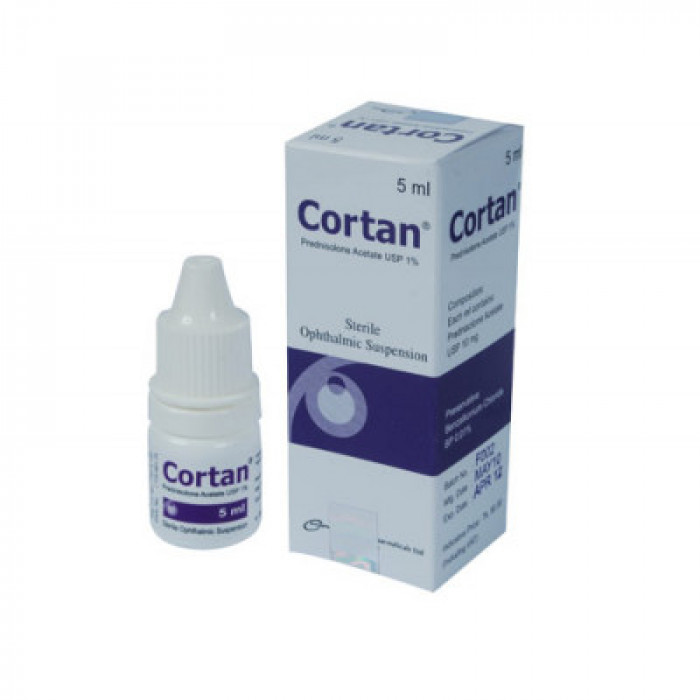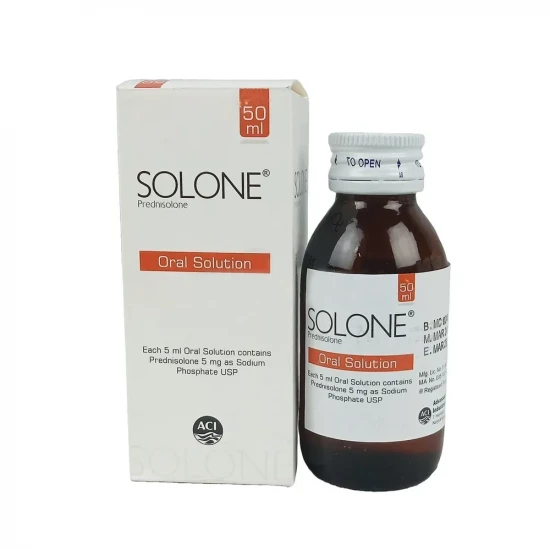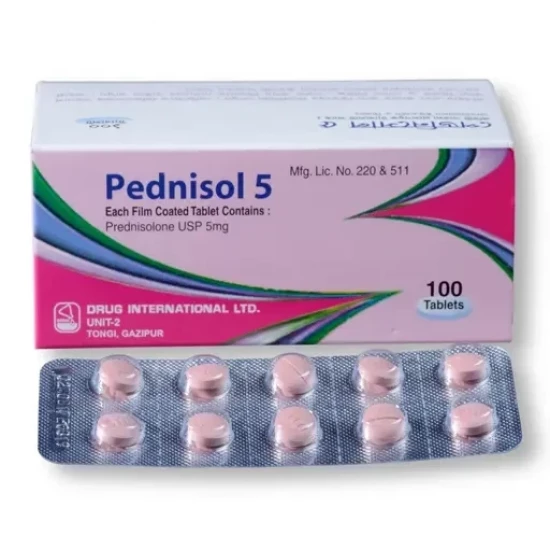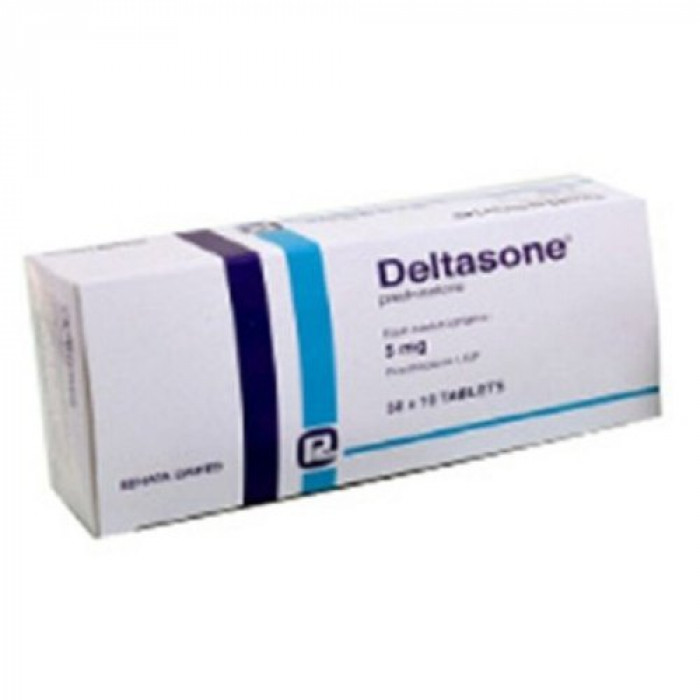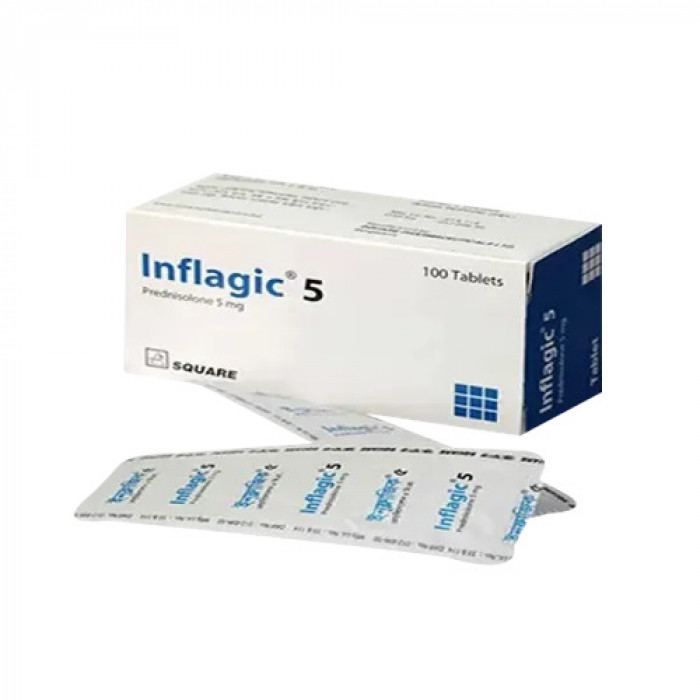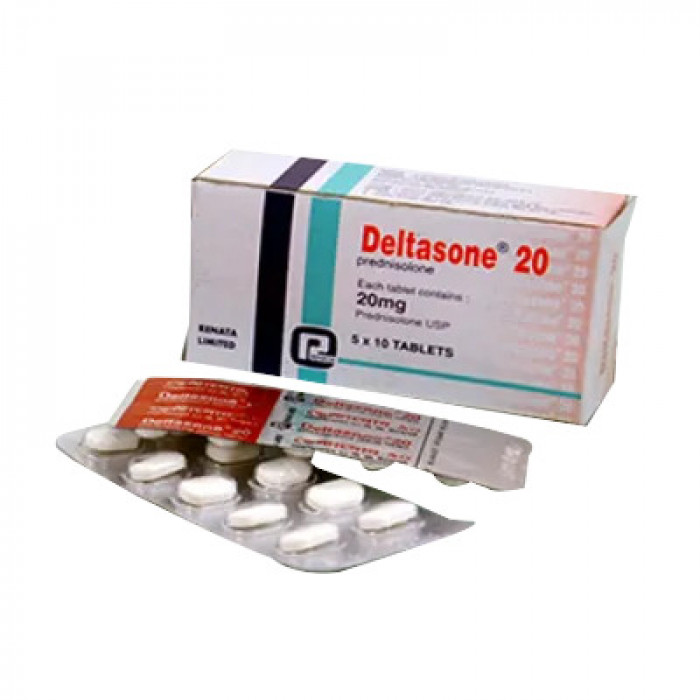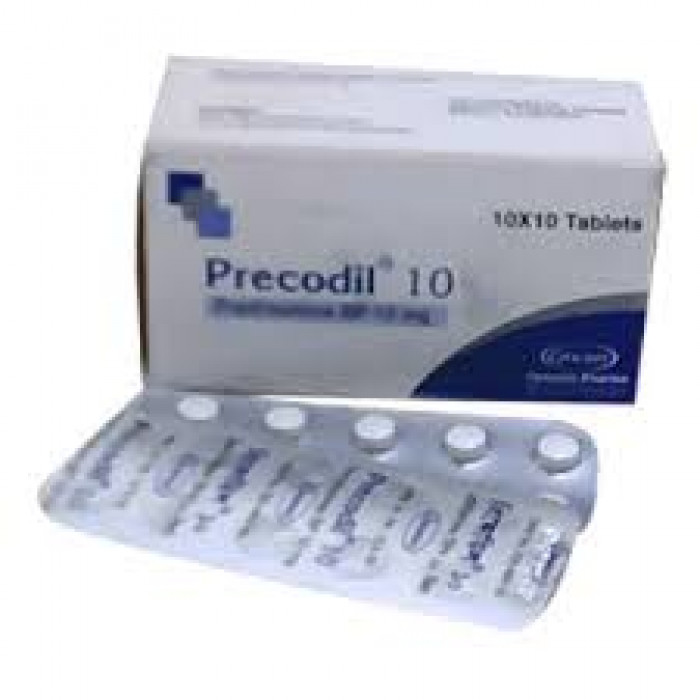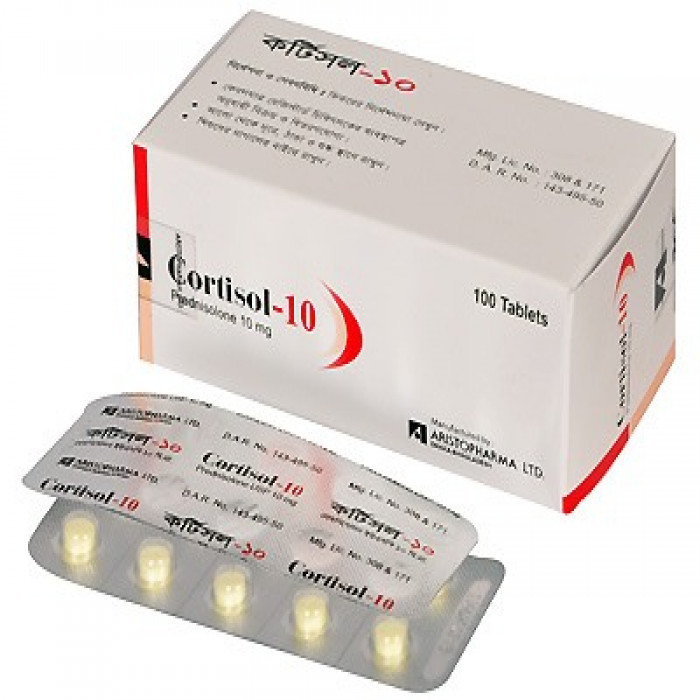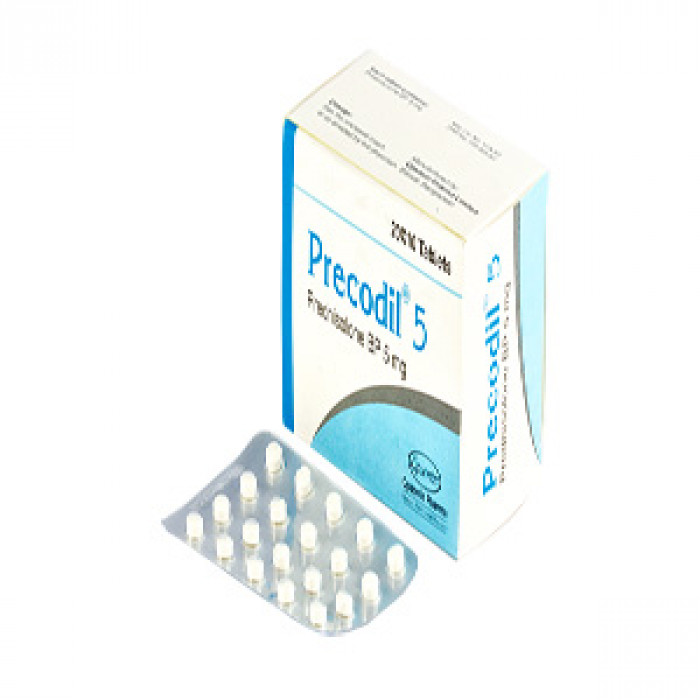
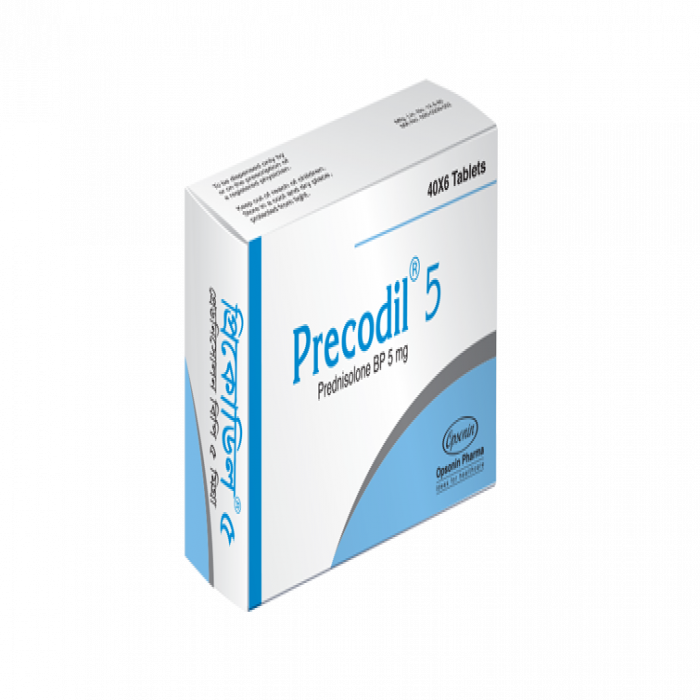
✔ 100% Authentic Product
👁️ Currently Viewing 1989
Precodil 5 mg is a synthetic corticosteroid with glucocorticoid properties. It inhibits the enzyme phospholipase A2, preventing the production of inflammatory mediators like leukotrienes, SRS-A, and prostaglandins. It is rapidly absorbed from the gastrointestinal tract, with 70-90% plasma protein binding and a half-life of 2–4 hours. It is metabolized in the liver and excreted in urine.
Discount
Price: ৳ 65
MRP:
৳
68.8
6%
Off

100% Genuine Products, Guaranteed

Safe & Secure Payments, Always

Fast, Secure & Efficient Delivery

Proper Packaging
 Cash on Delivery - All over Bangladesh
Cash on Delivery - All over Bangladesh Regular Delivery - 12-24 Hours, Dhaka City* Charge Tk.39-59
Regular Delivery - 12-24 Hours, Dhaka City* Charge Tk.39-59 Regular Delivery - 24-48 Hours, Other Cities* Charge Tk.99-110
Regular Delivery - 24-48 Hours, Other Cities* Charge Tk.99-110
 ফ্রি ডেলিভারিঃ - ৯৯৯ টাকা+ অর্ডারে, ঢাকা
শহরে
ফ্রি ডেলিভারিঃ - ৯৯৯ টাকা+ অর্ডারে, ঢাকা
শহরে ফ্রি ডেলিভারিঃ - ২৯৯৯ টাকা+ অর্ডারে, ঢাকার
বাহিরে
ফ্রি ডেলিভারিঃ - ২৯৯৯ টাকা+ অর্ডারে, ঢাকার
বাহিরে
100% Genuine Products, Guaranteed
Safe & Secure Payments, Always
Fast, Secure & Efficient Delivery
Proper Packaging
 Cash on Delivery - All over Bangladesh
Cash on Delivery - All over Bangladesh Regular Delivery - 12-24 Hours, Dhaka City* Charge Tk.39-59
Regular Delivery - 12-24 Hours, Dhaka City* Charge Tk.39-59 Regular Delivery - 24-48 Hours, Other Cities* Charge Tk.99-110
Regular Delivery - 24-48 Hours, Other Cities* Charge Tk.99-110 ফ্রি ডেলিভারিঃ - ৯৯৯ টাকা+ অর্ডারে, ঢাকা
শহরে
ফ্রি ডেলিভারিঃ - ৯৯৯ টাকা+ অর্ডারে, ঢাকা
শহরে ফ্রি ডেলিভারিঃ - ২৯৯৯ টাকা+ অর্ডারে, ঢাকার
বাহিরে
ফ্রি ডেলিভারিঃ - ২৯৯৯ টাকা+ অর্ডারে, ঢাকার
বাহিরে
✅ Description:
Rheumatic Disorders: Used for managing conditions such as psoriatic arthritis, rheumatoid arthritis, juvenile rheumatoid arthritis, ankylosing spondylitis, acute and subacute bursitis, acute nonspecific tenosynovitis, acute gouty arthritis, and post-traumatic osteoarthritis.
Endocrine Disorders: Effective for primary or secondary adrenocortical insufficiency, congenital adrenal hyperplasia, nonsuppurative thyroiditis, and hypercalcemia associated with cancer.
Dermatologic Conditions: Treats severe skin disorders like pemphigus, bullous dermatitis herpetiformis, severe erythema multiforme, exfoliative dermatitis, mycosis fungoides, and severe psoriasis.
Allergic Conditions: Relieve seasonal or perennial allergic rhinitis, bronchial asthma, contact dermatitis, atopic dermatitis, serum sickness, and drug hypersensitivity reactions.
Respiratory Disorders: Used for conditions such as symptomatic sarcoidosis, berylliosis, fulminating aspiration pneumonitis, and severe lung infections.
Hematologic Disorders: Manages idiopathic thrombocytopenic purpura, secondary thrombocytopenia, acquired autoimmune hemolytic anemia, erythroblastopenia, and RBC anemia.
Edematous States: Induces diuresis and remission of proteinuria in nephrotic syndrome without uremia, including cases caused by lupus erythematosus.
Gastrointestinal Diseases: Effective for managing ulcerative colitis and regional enteritis.
✔️ Uses of Precodil 5
Treatment of Allergic reactions/conditions
✔️ Precodil 5: Dosage and Administration
Initial Dose: Ranges between 5 mg and 60 mg daily, depending on the condition. After a favorable response, the dose should be gradually reduced to the lowest effective maintenance dose. Abrupt withdrawal should be avoided, especially after long-term use.
Multiple Sclerosis: 200 mg daily for one week, followed by 80 mg every other month.
Adult-Nephrotic Syndrome:
- Initial: 2 mg/kg/day (maximum 80 mg/day) in 3-4 divided doses until the urine is protein-free for 3 consecutive days (up to 28 days).
- Maintenance: 0.5–1 mg/kg every other day for 3–6 months.
Anti-inflammatory Conditions: 5–60 mg/day in divided doses (1-4 times daily).
Acute Asthma: 40–60 mg/day orally in a single or divided dose for 3–10 days.
Allergic Conditions: Gradually tapered doses over 6 days, starting at 10 mg and reducing to 5 mg.
Pediatric Dosage: - Asthma (1–12 years): Dosages vary by age (10–40 mg every 12 hours for acute episodes and similar doses every other day for maintenance).
- Anti-inflammatory and Immunosuppression: 0.05–2 mg/kg/day divided into 1–4 doses.
✔️ Side Effects of Precodil 5
Common: Increased appetite, indigestion, restlessness, or nervousness.
Less Common/Rare: Changes in skin color, dizziness, facial flushing, hiccups, excessive sweating, and spinning sensations.
✔️ Overdose Effects of Precodil 5
Prolonged use of high doses can lead to adverse effects. Gradual dose reduction is recommended for treatment. Overdose should be managed symptomatically.
✔️ Drug Interactions
Precodil 5 mg's effectiveness may be reduced by drugs such as aminoglutethimide, antacids, barbiturates, carbamazepine, griseofulvin, mitotane, phenylbutazone, phenytoin, primidone, and rifampin. It can lower potassium levels, increasing the risk of cardiac arrhythmias if combined with digitalis. Caution is advised during immunizations.
✔️ Contraindications
Precodil 5 mg should not be used in patients with systemic infections unless specific anti-infective therapy is initiated. It is also contraindicated in individuals allergic to its ingredients and those with ocular herpes simplex due to the risk of corneal perforation.
✔️ Pregnancy and Lactation
Corticosteroids like Precodil 5 mg should be used in pregnancy and breastfeeding only if the potential benefits outweigh the risks. Infants born to mothers who used corticosteroids during pregnancy should be monitored for signs of hypoadrenalism. Salt restriction and potassium supplementation may be necessary.
✔️ Precautions and Warnings
Use caution in patients with diabetes, hypertension, psychological disorders, osteoporosis, chronic nephritis, and postmenopausal women. Long-term use can lead to conditions such as Cushing’s habitus, hyperglycemia, muscle weakness, delayed wound healing, psychiatric disturbances, and increased susceptibility to infections.
✔️ Storage Instructions
Store Precodil 5mg in a cool, dry place, away from light. Keep it out of reach of children.
⚠️Disclaimer:
At ePharma, we’re committed to providing accurate and accessible health information. However, all content is intended for informational purposes only and should not replace medical advice from a qualified physician. Please consult your healthcare provider for personalized guidance. We aim to support, not substitute, the doctor-patient relationship.




